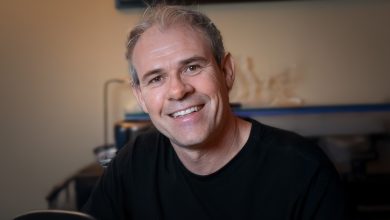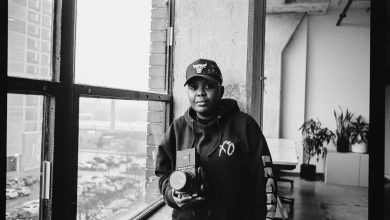TWiP 330 – Sweet & Sour Photography
Hosts: Frederick Van Johnson, Doug Kaye, & Martin Bailey
This week on TWiP…
- Online petition results in two speakers pulling out of WPPI
- Photos of Sony's fullframe mirrorless A7 & A7r cameras leak
- Plus an interview with model Tor Alexander
This week Frederick sat down with model Tor Alexander. In this interview you'll get advice from a professional model on how photographers should hire, pay, and work with models. You'll also hear how Tor got started in the modelling businesses, and more!
- Doug: Jeffrey Friedl's Lightroom Goodies
- Martin: www.thecandidframe.com
- Frederick: Sony QX10 Sony QX100
Please Support our Sponsors:
Squarespace
This episode is brought to you by Squarespace, the all-in-one platform that makes it fast and easy to create your own professional website, portfolio or online store. For a free trial and 10% off, go to squarespace.com and use offer code TWIP10.
Shutterstock
This episode is also brought to you by Shutterstock.com. With over 28 million high-quality stock photos, illustrations, vectors and video clips, Shutterstock helps you take your creative projects to the next level. For 25% off your new account, go to Shutterstock.com and use offer code TWIP1013.
Connect with Our Hosts & Guests:
Credits:
Pre-production by: Bruce Clarke
Post production by: Suzanne Llewellyn & Vince Bauer
Bandwidth provided by: Cachefly
Intro Music by: Scott Cannizzaro







Something you skirted with the Q&A:
The problem is not positivity, it is lack of depth. Saying a photo is “awesome”, “nice”, “fantastic”, etc. is no different than or better than “sucks”, “awful”, etc.
I am a designer and my heart sinks every time I present a a proof or design idea to a client and the respond with “I like it”. On one hand, I want them to like it, but on the other hand without knowing what appeals to them, the comment is useless. The same with photo critique. If I don’t know what about my photo makes it “awesome” or “suck” for you, I can’t grow or change (if I choose to).
The problem is that most people (even some photographers and designers) either don’t have the time or vocabulary to actually critique, so they rely on taste instead. Taste has almost nothing to do with critique.
Jim, I agree wholeheartedly with your comment. I will go even further, much of the conversation online about photography is about gear. Period. I have not found a single podcast/blog where they spend some time actually looking at a photograph and explaining why it does or does not work. Craig Tanner’s “The Daily Critique” is no longer around. Most photographers don’t know about the elements and principles of design. They help to explain why an image appeals to someone or not. I have found that David DuChemin’s Photographically Speaking and Michael Freeman’s The Photographer’s Eye, to be helpful in gaining this vocabulary.
Thank you. Added both to my reading list.
If your just talking tweets. Day in between Sat. and Sun. I have heard for years. It was copied verbal from person to person long before the internet and most likely computers.
I think some podcasts have done that, but they don’t last long. It only takes so many podcasts to teach photography without repetition. If a podcast cover hardware, there’s always new things to talk about.
I am not sure you understand what I am proposing. The goal of the podcast would not be to “teach photography.” The goal of the podcast would be to teach photographers how to intelligently talk about photographs in order to give (and receive) worthwhile critiques. I could easily spend years talking about images from a group like Avedon, Karsh, Ritts, Platon, and Penn. The repetition would serve to help identify individual photographer’s styles and visual tendencies.
The reason people shy away from this is that it is actually hard work. Talking about gear is much, much easier and arguably more fun. Actually talking about how photographs work or don’t work is more useful to a photographer.
I think I follow you, you are asking for more of an art/design podcast then? I’m a digital designer and recognize what FullMetalPhotog is saying. Great photography is art, but it’s also design. The rules of design are pretty clear and you learn them in art school. If you use them for your photography will be better for it. Most think they need another “how to” photo book, when they should be picking up a book on the basics of design.
The goal of the podcast would be to give photographers a vocabulary to talk about why an image works or doesn’t work. I think using the elements and principles of design to critique photographs would give people this vocabulary.
I may have to man up and start it on my own.
I don’t that they skirted issue as maybe not expressed their answers well. I believe what they were saying was, have your work critiqued by your peers that you respect.
I do agree with you about the language of critique, but that is harder and harder to fine with less and less formally trained shooters. I had many critiques through my years as a photographer first in school and college then later working for various publications.
Talking to various editors and art directors, one tough most times constructive criticism. I have not found a good online source for that, most critique sites breakdown into angry mobs unless monitor heavily.
Has Jasmine’s Starr’s team only copied tweets? Don’t think that’s such a big deal. As far as I understand twitter, it’s pretty much people just repeating each other anyway.
“As far as I understand twitter, it’s pretty much people just repeating each other anyway”
Your understanding of twitter is lacking. Greatly.
Yes, that is true, tbh. But isn’t it just a bit like retweeting? I don’t use twitter much at all, but it seems unlikely you could credit original sources in 140 characters.
It’s clearly not the same as copying entire blog posts or using someone else pictures.
Retweeting is letting your audience know your source. She didn’t.
It was more than twitter it was also four articles from different blogs that she cut and pasted into her own articles. Not as quotes but as if she wrote them. This is so far what she got caught with doing and has admitted too. If there are anymore it is anyone’s guess.
I think the issue stems from photographers marketing to photographers. I think these two folks are just trying to keep up with every other photographer online trying to get followers, and establishing a relevance among the photo community. As for photography I watched Doug Gordon on Creative Live and he is a great photographer.
I know this was Sony’s big day, but can you do more Fuji talk? I find there to be a lot of Sony and m43 talk, which I enjoy too, but it isn’t that useful to me. I would love to hear about some of you using the various Fuji lenses (seriously, online reviews focus way more on empirical tests than does-it-take-a-good-picture).
Always love the show, and the only reason I ask is because I like the opinions of you and your guests.
Regards,
Mike
Mike, I just received a X-E1 and am using it for two weeks along with five x-mount lenses for a review to be published in a future edition of All About the Gear.
Hi Doug, thanks for the response. I look forward to the show. 🙂
I want a full frame mirrorless camera with a leaf shutter from anybody other than Sony or Pentax. This would be and epic camera!!
The Jasmine Star and Doug Gordon scandal reminds me of an old joke;
A fellow had just been hired as the new CEO of a large high tech corporation. The CEO who was stepping down met with him privately and presented him with three numbered envelopes. “Open these if you run up against a problem you don’t think you can solve,” he said.
Well, things went along pretty smoothly, but six months later, sales took a downturn and he was really catching a lot of heat. About at his wit’s end, he remembered the envelopes. He went to his drawer and took out the first envelope. The message read, “Blame your predecessor.”
The new CEO called a press conference and tactfully laid the blame at the feet of the previous CEO. Satisfied with his comments, the press — and Wall Street – responded positively, sales began to pick up and the problem was soon behind him.
About a year later, the company was again experiencing a slight dip in sales, combined with serious product problems. Having learned from his previous experience, the CEO quickly opened the second envelope. The message read, “Reorganize.” This he did, and the company quickly rebounded.
After several consecutive profitable quarters, the company once again fell on difficult times. The CEO went to his office, closed the door and opened the third envelope.
The message said, “Prepare three envelopes.”
Me thinks Jasmine Star and Doug Gordon are down to one envelope.